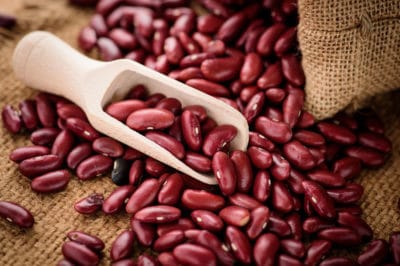Get the Soil Ready
Kidney beans, like most bean varieties, like a fertile, well-drained soil. Excess nitrogen creates problems because it increases leaf growth at the expense of flowers and bean pods. Too much water can result in soil-borne disease like fungi, or mold and mildew on the leaves. Loose, friable soil makes it easier for the seed leaves to push through the soil during germination.
Choosing Kidney Bean Varieties
Kidney beans are available in dark red, light red and white varieties. Here are some possible choices:
- Red Hawk – dark red, 95 to 102 days.
- Cabernet Dark Red – good canning variety, 91 days.
- Sacramento Light Red – pink bean, reliable performer, 85 days.
- Clouseau Light Red – good for sandy soils, 90 to 95 days.
- Silver Cloud – white bred for Pacific Northwest, 96 days.
Keep Them Warm
Kidney beans are warm-season annuals. Plant when it’s too cold and they will germinate slowly, if at all. Cold soil also increases the chance of rotting seed. In cold springs use black plastic to heat the soil. Planted at least two weeks after the last frost, kidney beans will usually germinate within seven to 10 days. Optimum growing temperatures range from 65°F (18°C) to 80°F (26°C).
Don’t Skimp on Water
Kidney beans need adequate water to develop good-sized beans. An inch a week is the minimum, but most beans will do better with more. However, they cannot handle waterlogged soils and will develop fungal diseases and mildew if the roots or leaves are too wet. If you use a sprinkler, make sure beans are dry before working with them to prevent spreading disease.
When to Harvest
Unlike some beans that can be used as green or shell beans, kidney beans are primarily used as a dry bean. The seeds will become clearly visible as they swell within the pod. Let them ripen until fully dry before harvest. If rain threatens, harvest and hang upside down in a dry shed or garage to finish drying. Thresh beans seeds from pods.
Cooked Beans Only
Kidney beans contain a toxin that can cause severe gastrointestinal distress. The toxin is neutralized by cooking and is not present in the dried form of the bean. To cook raw kidney beans, boil for 30 minutes – do not use a slow cooker, as the higher temperature is required to neutralize the toxin. Canned kidney beans can be safely used without cooking.
